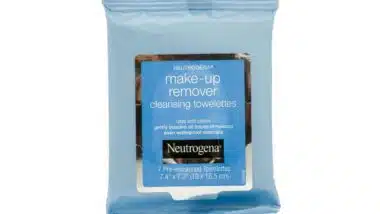
Surgery with staples used to close incisions rather than stitches has been linked to serious injuries and death due to stapler design defects. A growing number of plaintiffs who have filed a surgery staples lawsuit claim these devices fail to form proper staples or malfunction.
According to Kaiser Health News, there have been well over 2 million event reports filed by manufacturers of surgical staples since 2014 – and virtually none of those reports were accessible by the general public, including the medical community.
What Are Surgery Staples Made Of?
When surgical staples first came on to the market, the staples were made of stainless steel. Today, they are usually made of titanium, although stainless steel is more frequently employed in clips and certain skin staples.
How Long Must Surgical Staples Remain in Place?
Following surgery with staples, the amount of time that staples remain can vary from 2-3 days to three weeks, depending on placement and the size and direction of the incision. Some surgical staple pain is normal, but should gradually ease. If the pain continues or gets worse, it may indicate infection or other complications.
How Surgical Staples Are Removed
Staples are removed by the surgeon using specialized equipment, known as a staple extractor tool. After removing the dressing, examining the incision for signs of infection, and sterilizing the surgical site, the surgeon starts by sliding the extractor tool underneath the outermost staples, then gently wiggles and lifts up until it is removed from the skin. Afterward, a fresh dressing or medical tape will be applied.
The process of removing surgery staples is usually not painful, although the patient may feel a tugging sensation, and the area will remain tender for a time.
FDA Expresses Concerns to Health Care Providers
The FDA sent a letter to health care providers in March 2019 advising them that the FDA had received more than 41,000 individual medical device reports regarding surgical staplers and staples used internally between Jan. 1, 2011 and March 31, 2018. The reports included 366 deaths, more than 9,000 serious injuries, and more than 32,000 malfunctions.
Complaints concerning an opening of the staple line, malformed staples, misfiring staplers, difficulty in firing the stapler, complete failure of the stapler to fire a staple, and misapplied staples to be among the most commonly reported issues in the adverse event reports.
Patients could experience a variety of side effects from surgery with staples when the device or a staple malfunctions, including bleeding, sepsis, the formation of fistulas, tearing of tissues or internal organs, an increased risk of injury recurrence or even death.
 The FDA’s letter to surgeons advised them that a different size of staple may be needed if the surgeon has difficulty squeezing the stapler’s handle. The stapler should not be used on tissue that is either too thick or too thin for the selected size of staple because such circumstances could result in a malformed staple. This is similar to an office worker who tries to staple three pages with a stapler made for 50 pages or more – often the result is a malformed staple.
The FDA’s letter to surgeons advised them that a different size of staple may be needed if the surgeon has difficulty squeezing the stapler’s handle. The stapler should not be used on tissue that is either too thick or too thin for the selected size of staple because such circumstances could result in a malformed staple. This is similar to an office worker who tries to staple three pages with a stapler made for 50 pages or more – often the result is a malformed staple.
If, as a patient, your tissues are swollen with fluid, bleed easily upon gentle manipulation, tear easily, or appear necrotic (dead tissue), the FDA advises the surgeon to consider options other than surgical staples for a more gentle closure.
Surgery Staples Lawsuit
A number of medical device manufacturers, including Johnson & Johnson‘s Ethicon division, Medtronic and Covidien have been targeted in litigation over injuries connected to surgery with staples. The number of surgical staples lawsuit filings has increased dramatically in the wake of a recent investigation by Kaiser Health News, which revealed the existence of a secret, hidden database that even physicians – including FDA director Dr. Robert Califf – knew nothing about.
The purpose of this hidden database was to allow the FDA to “more efficiently review adverse events and take action where warranted without sacrificing the quality of our review or the information we receive,” according to an FDA spokesperson. However, the inaccessibility of these reports made it difficult for surgeons to assess the safety of such devices.
The FDA eventually acknowledged that “many more device malfunction reports” had been reported with regard to these devices than the agency had previously disclosed to the public. More than 56,000 reports of surgical stapler malfunctions were reported through non-traditional channels between 2011 and 2018, bringing the total number of these reports to nearly 110,000 malfunctions or injuries during this period.
The existence of the secret database was discovered by a journalist who uncovered approximately half a million reports of medical device implants causing injuries, including around 66,000 incidents involving surgical staplers. The journalist was tipped off to the existence of “alternative summary reports” by a source who had previously been employed by the FDA. After several months of investigation, her story regarding the secret database was published by Kaiser Health News in March 2019.
Prior to the uncovering of the secret database, at least one doctor had reported being unable to find any records pertaining to surgical staple malfunctions in the FDA’s public database, despite speaking to multiple colleagues about incidents that had occurred during surgery with staples. The secrecy of the database may have kept both doctors and patients in the dark about how pervasive the issues with surgical staplers were.
Is Anything Being Done?
In October 2019, the FDA issued a Class I recall for several Echelon Flex 60 Endopath Stapler models, manufactured and distributed by Ethicon between July 18 and Sept. 26 of that year.
A Class 1 FDA recall is defined as “a situation in which there is a reasonable probability that the use of or exposure to a violative product will cause serious adverse health consequences or death.”
According to the agency, the problem was a poorly-designed component that could cause malformed surgical staples, resulting in prolonged surgery and numerous post-surgery complications including leakage, bleeding and pain and suffering. At least seven serious injuries and one fatality have been attributed to the Echelon.
The FDA has also recommended that surgical staplers be reclassified and subject to greater regulation.
In December 2019, the ECRI Institute named surgical staplers as a priority concern in the field of health and medical technology. The ECRI Institute is a nonprofit that keeps track of hospital-reported adverse medical events and releases a yearly Top Ten list of health industry related hazards.
In addition to other potential hazards including cybersecurity risks, medication dosage errors, infection risks from sterilization or cleaning errors, and loose nuts and bolts in medical implants, the misuse of surgical staplers was at the top of the list. According to ECRI, common problems with the staplers occur when doctors choose the wrong size of staple, or do not have adequate visibility to see what and where they are stapling.
Filing a Surgical Stapler Lawsuit
If you or someone you love has suffered from complications after undergoing a surgery with surgical staples that necessitated corrective surgery, you may be able to file a lawsuit and pursue compensation. Of course, filing a surgical stapler lawsuit cannot take away the pain and suffering caused by these kinds of complications, nor can it bring a loved one back to life, but it can at least help to alleviate the financial burden too often incurred by medical expenses, lost wages, and more.
Filing a lawsuit can be a daunting prospect, especially while dealing with health complications, so Top Class Actions has laid the groundwork for you by connecting you with an experienced attorney. Consulting an attorney can help you determine if you have a claim, navigate the complexities of litigation, and maximize your potential compensation.
ATTORNEY ADVERTISING
Top Class Actions is a Proud Member of the American Bar Association
LEGAL INFORMATION IS NOT LEGAL ADVICE
Top Class Actions Legal Statement
©2008 – 2026 Top Class Actions® LLC
Various Trademarks held by their respective owners
This website is not intended for viewing or usage by European Union citizens.
E-mail any problems with this form to:
[email protected].
Oops! We could not locate your form.












